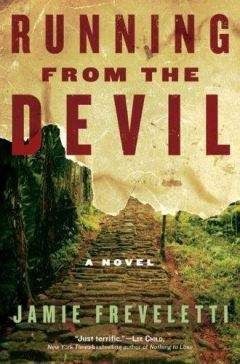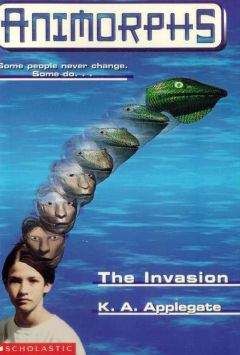Emma’s use of scopolamine, or “devil’s breath,” its Colombian street name, is based in fact. Scopolamine is a chemical that contains antinausea properties and in commercial use is a favorite of scuba divers. It’s derived from the datura plant, a member of the nightshade family commonly called jimsonweed. All parts of the plant are toxic. When ground to a fine powder and blown in the face of the victim, it is said to create hallucinations and a “zombie” effect that renders the victim completely suggestible. While the hallucinatory effects are well documented, and the drug can cause the victim to fall into a stupor, I have my own personal doubts about the zombie reports. My cynical trial attorney’s antenna started vibrating after I read the claims of a politician who denied responsibility for stealing cash by claiming that he did so only while in a zombie state after thieves used devil’s breath on him. Be that as it may, jimsonweed is no joke, and it can kill.
The leaves and branches of the neem tree are used the world over as an antiseptic, and the indigenous people of Colombia chew coca leaves to settle an upset stomach and as a tonic to impart energy. Coca tea is sold legally in some countries in South America.
The traveler’s palm exists, though it is not indigenous to Colombia, and one can drink from it as described. My thanks to the Landscapers at the CuisinArt Resort in Anguilla, British West Indies, for teaching me how to drink from theirs, showing me the neem tree, and describing the many other edible plants growing on the acreage under their management.
Cameron Sumner’s job is fictional, but is loosely based upon a former joint program between the United States and Colombia called the Air Bridge Denial program. For an in-depth look at how the real program worked, read the study issued in 2005 by the United States Government Accountability Office (GAO) at www.gao.gov. In fact, read anything listed on the GAO’s site. I am continually impressed by the quality of the reports that I find there. My thanks to Jess T. Ford, director, International Affairs and Trade, for his update on the report.
The Lost City exists, but the elusive plant that Emma destroys does not. The city, discovered thirty years ago by grave robbers, continues to be a six-day hike through paramilitary-controlled coca fields, past indigenous villages, and into areas that even a donkey cannot navigate. A group trekking to the Lost City was kidnapped in 2003, but I could find no other reports after that date.
Kidnappings in Colombia have settled down quite a bit in recent years thanks to the Uribe administration’s crackdown on the paramilitary organizations. The arrests have reached into the highest echelons of Colombian society and include some officials considered to be Uribe’s allies, as well as a cousin. However, FARC, Colombia’s best-known paramilitary organization, has vowed to once again increase its efforts. One can only hope FARC changes its stance, because Colombians are some of the nicest people I have ever met. My thanks to all who assisted me with this book.
ACKNOWLEDGMENTS
This book would not have been possible without the support and assistance of an entire army of people.
To my agent, Barbara Poelle at the Irene Goodman Literary Agency, whose great advice and good humor set me on the right track, kept me laughing, and helped me through the publishing gauntlet.
To everyone at HarperCollins/William Morrow who was willing to take a chance on a debut thriller writer.
To my initial editor, Carolyn Marino, whose editorial expertise was so good that reading her suggestions was like taking a condensed writing class. Two years ago I created a short “wish” list of thriller editors for the book and Carolyn was on it. When Barbara called to tell me whom I’d be working with at Harper, I was speechless. I was also ski-less, as I was just getting on a lift when the call came through and in my excitement forgot to strap on the skis.
To my second editor, Lyssa Keusch, who caught the pass from Carolyn Marino without missing a beat and who guided me through the next stages in editing the manuscript.
To Wendy Lee and Johnathan Wilber, who helped me with the myriad of details required in preparing the manuscript.
To Angela Swafford, Colombian author, journalist, and intrepid adventurer, who obtained clearance to ride with the Colombian army and tour the Cano-Limón-Covenas pipeline and generously shared her experiences with me.
To the professionals and friends who gave advice on technical matters, some mentioned in the Author’s Note at the end of this book. Any errors are mine. George E. Boos, retired commercial airline pilot; Ronald A. Sherman, MD, MSc, Dtm&H, Department of Pathology, University of California, Irvine; Jess T. Ford, director, International Affairs and Trade, United States Government Accountability Office; Sergeant Brandon Verstat, United States Marine Corps; Bill Edler and his wife, Carolina Diaz Osorio; and the woman scientist on the other end of the line at the University of Chicago Department of Molecular Genetics and Cell Biology who didn’t treat me like a nut when I called out of the blue and asked how to genetically reconstitute burned plants.
To Robert Thorson, Jill Griffiths, and Darwyn Jones, who taught me how to write copy, helped me create the perfect pitch, and edited my query letter.
To the other writers willing to give me their feedback: Lisa Rosenthal and the writers in her “Dig in” revision workshops, the Buck-town Library Writers’ Group, and the “Chicago Contingent.
To Dana Kaye, Darwyn Jones, and Marcus Sakey, who invited me to join the Contingent.
To my father, who enthusiastically read anything I mailed to him.
To my mother, who was willing to drop everything to read drafts of troublesome chapters, and who raised me to follow my dreams.
To my children, Alex and Claudia, who helped me run off the ski lift in my boots and still weren’t embarrassed to be seen with me.
And to my husband, Klaus, whose ultramarathon running inspired part of the book’s premise. Klaus encouraged me to write and didn’t flinch when I told him I was going to take a sabbatical from my law practice to do it. His love, support, and willingness to travel to questionable areas to help research my settings make life a blast. Thank you, my love, for driving the getaway car.
About the Author
JAMIE FREVELETTI is a trial lawyer and a runner. She lives in Chicago, Illinois. This is her first book.
www.jamiefreveletti.com
Visit www.AuthorTracker.com for exclusive information on your favorite HarperCollins author.


